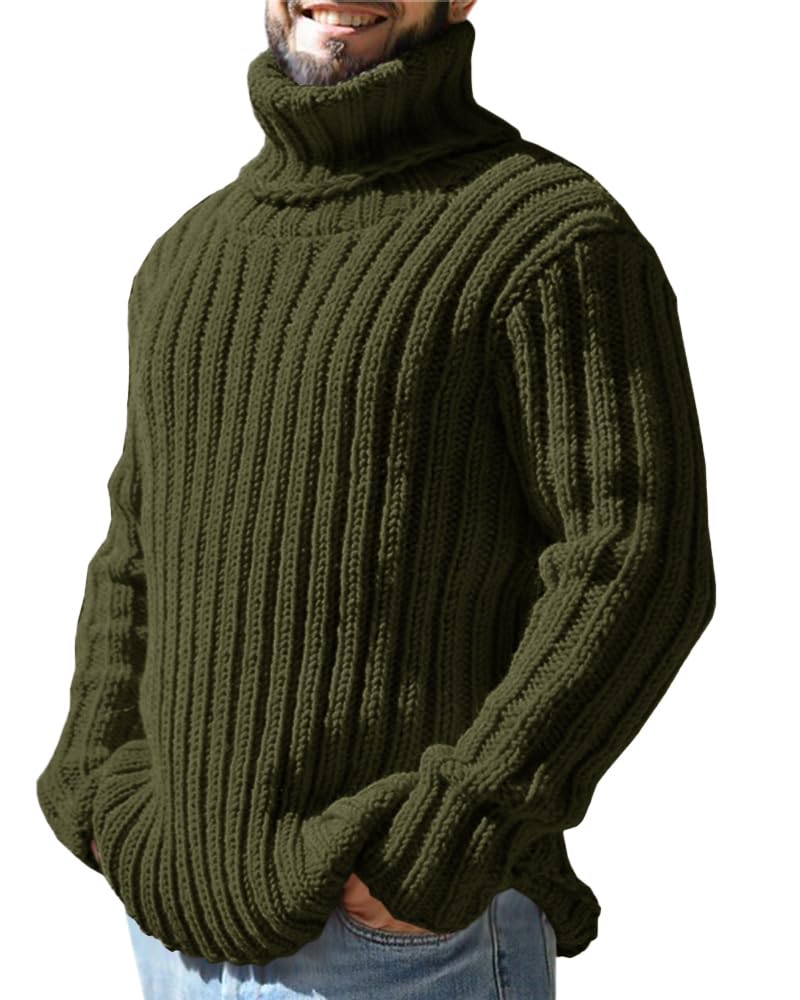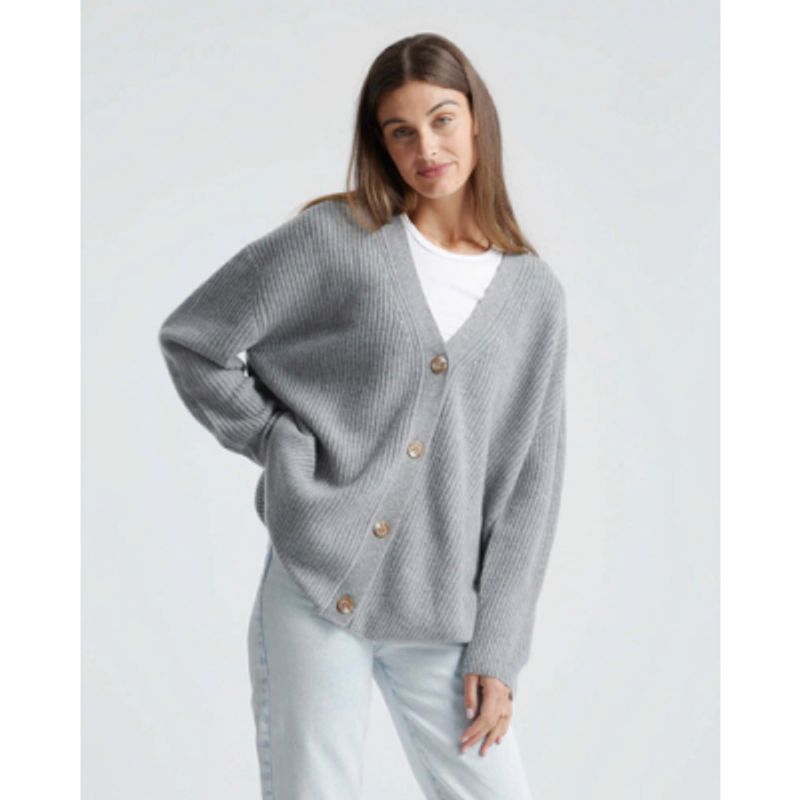Men’s turtleneck sweaters, a classic and versatile piece in men’s fashion, offers both warmth and style during cooler months. To select the perfect one that complements your wardrobe and personal style, consider the following key aspects.

1. Fit and Neckline Height
Neckline Fit:
The hallmark of a good turtleneck is its neckline which should fit snugly around the neck without being too tight or restrictive. It should provide adequate coverage without causing discomfort or bulging.
Body Fit:
The body of the sweater should be tailored to your preference – slim fits for a more contemporary look, or regular fits for a relaxed feel. Ensure it contours your torso without bunching at the waist or arms, especially if you’re looking for a sleek silhouette.
2. Material Selection
Quality Fabrics:
Choose from natural fibers like merino wool, cashmere, or high-quality cotton blends. These materials offer excellent insulation, breathability, and can maintain their shape over time. Consider blends with synthetic fibers for added durability and resistance to wear.
Thickness and Warmth:
Evaluate the sweater’s knit thickness based on your climate and layering needs. Fine-gauge knits are suitable for indoor wear or as an underlayer, while chunkier knits provide extra warmth for outdoor activities.
3. Knit Patterns and Texture
Texture Variety:
Look for interesting textures such as cable knits for visual depth, ribbed designs for stretch and recovery, or smooth jersey knits for simplicity.
Durability:
Pay attention to the construction of the knit. High-quality sweaters will have tightly woven stitches that are less prone to pilling or unraveling.

4. Color and Style
Classic Colors:
Neutral shades like black, navy, and gray are timeless choices that pair well with almost any outfit. Bold hues or patterns can add a pop of personality to your ensemble but may limit versatility.
Style Considerations:
For professional settings, opt for solid colors and minimalistic design. More casual occasions can allow for playful patterns, stripes, or contrasting trims.
5. Sizing and Proportion
Length:
The hemline of a men’s turtleneck should hit at the midsection or slightly below the belt line. This creates a balanced appearance when worn untucked or tucked into trousers.
Shoulder Seams:
Check that shoulder seams align correctly with the edge of your shoulders. Proper fitting here ensures a polished look and prevents stretching or sagging over time.
6. Collaboration with Your Wardrobe
Layering:
Select a turtleneck that works seamlessly under jackets, blazers, or coats. Consider the collar height; lower collars are better suited for layering under suit jackets, while higher ones work well with outerwear.
Versatility:
Invest in pieces that can transition between formal and casual settings. Pair a dark turtleneck with dress pants and loafers for a smart-casual outfit, or with jeans and sneakers for a laid-back look.

7. Brand Reputation and Sustainability
Craftsmanship:
Opt for brands known for their craftsmanship and attention to detail. Quality stitching, reinforced seams, and careful finishing all contribute to a sweater’s longevity.
Ethical and Sustainable Choices:
Explore brands committed to sustainable production processes and environmentally friendly materials, ensuring that your purchase supports responsible practices.
How to clean men’s turtleneck sweaters
A well-chosen turtleneck sweater is a staple in any man’s wardrobe, offering both warmth and style. However, proper care and cleaning are essential to maintain its quality, appearance, and longevity. Here is a detailed guide on how to wash and care for your men’s turtleneck sweaters.
1. Understanding the Fabric Content
- Reading Care Labels: Always begin by reading the garment’s care label. It will provide specific instructions based on the fabric type – whether it’s wool, cashmere, cotton, or synthetic blends.
- Sensitive Fabrics: Natural fibers like merino wool and cashmere require gentle handling. They may need hand washing, cold water cycles, or dry cleaning to prevent shrinkage, color fading, or damage to the delicate yarns.
2. Hand Washing Techniques
- Preparation: Fill a clean sink or basin with cool water and a mild detergent designed for delicate fabrics. Avoid using bleach or harsh chemicals.
- Soaking: Submerge the sweater fully, gently agitate the water to distribute the soap, but avoid rubbing or twisting which can stretch or distort the shape.
- Rinsing: Drain the soapy water and refill with cool, clean water to rinse thoroughly. Repeat until the water runs clear.
- Drying: Gently squeeze out excess water without wringing. Lay the sweater flat on a towel, reshape if necessary, and allow it to air dry away from direct heat sources.

3. Machine Washing Guidelines
- Delicate Cycle: If your sweater is machine washable, use the gentlest cycle available and set the water temperature according to the care label. Use a mesh laundry bag to minimize friction.
- Mild Detergent: Choose a gentle, non-biological detergent that won’t harm natural fibers or cause color bleeding.
- Spin Cycle: Avoid high-speed spins as they can stretch the fabric. Opt for the lowest spin speed or a no-spin option.
4. Dry Cleaning
- Professional Services: Some luxury or specialty materials may require professional dry cleaning. Ensure you choose an establishment experienced in dealing with fine garments.
- Frequency: Over-dry cleaning can also damage the fibers; reserve this method for when absolutely necessary.
5. Spot Cleaning
- Treating Stains: For minor stains, use a soft cloth dampened with water or a specialized stain remover. Apply gently and then blot, never rub, the affected area.
- Prompt Action: Address stains immediately. The longer they sit, the more difficult they are to remove.
6. Storage and Maintenance
- Cleaning Before Storage: Store your sweater only after it’s completely clean and dry to prevent mold, moth damage, or unpleasant odors.
- Proper Folding/Hanging: Fold turtlenecks neatly and store them flat to retain their shape. Hanging can stretch out the neck and shoulders over time.
- Moisture Absorption: Use moisture-absorbing sachets or cedar balls in storage containers to keep the environment dry and fresh.
7. Reviving Pilling and Shrinkage
- De-Pilling: After several wears, pills may form due to friction. Use a sweater stone or lint shaver to carefully remove them without damaging the fabric.
- Reshaping: If your sweater has shrunk or lost shape, try soaking it in lukewarm water mixed with hair conditioner, then gently stretching it back into shape before drying flat.

Conclusion
In conclusion, choosing the ideal men’s turtleneck sweater involves a combination of personal style, functionality, and quality considerations. By focusing on factors such as fit, material, texture, color, sizing, and compatibility with your existing wardrobe, you’ll find a turtleneck that not only keeps you warm but also elevates your overall look. Remember to consider long-term value by investing in durable, timeless pieces that reflect your commitment to sustainability and style.









